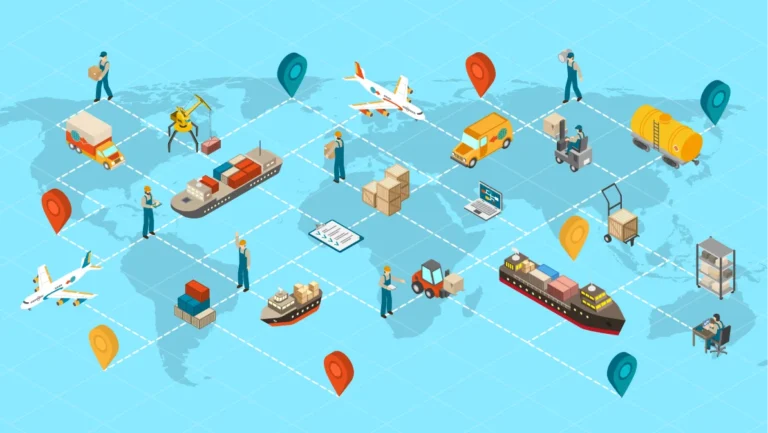Ever wondered how learning a trade can shape an entire economy? Vocational training does more than teach skills—it builds careers, strengthens industries, and fuels economic growth.
It can be welding, coding, or healthcare, hands-on training prepares workers for in-demand jobs, reducing unemployment and driving innovation.
Here’s how vocational training plays a crucial role in economic development and why investing in skills-based education is a game-changer for communities worldwide.
What Is Vocational Training and How Does It Differ from Traditional Education?
When people think of education, they often picture classrooms, textbooks, and long academic journeys. However, vocational training takes a different approach—it focuses on hands-on skills that lead directly to careers. Instead of theory-heavy lessons, vocational programs teach practical expertise needed in industries like healthcare, construction, and IT.
- Hands-on learning: Vocational training emphasizes real-world skills through practical experience.
- Faster career paths: Unlike traditional degrees that take years, many vocational programs can be completed in months.
- Job-specific training: These programs are designed to prepare students for specific careers rather than general academic knowledge.
How Does Vocational Training Contribute to Workforce Development?

Vocational training plays a key role in preparing a skilled and job-ready workforce. By focusing on industry-specific skills, it helps bridge the gap between education and employment, ensuring that businesses have access to well-trained professionals. It also allows workers to upskill or reskill, making them more adaptable to changing job markets. This means more people can secure stable jobs, and industries can fill critical labor shortages with qualified employees.
What Are the Economic Benefits of Vocational Training?
Investing in technical education programs isn’t just good for individuals—it strengthens entire economies. When workers are equipped with specialized skills, businesses thrive, unemployment rates drop, and industries remain competitive. But how exactly does this impact the economy?
- Skilled workers find jobs faster, helping lower joblessness rates.
- Proper training leads to more efficient workers and higher-quality output.
- Skilled professionals drive technological and industrial advancements.
- More skilled workers mean higher wages and increased consumer spending.
How Does Vocational Training Support Industry Growth?
Industries thrive when they have access to a skilled and competent workforce, and vocational training plays a key role in making that happen. Through equipping workers with specialized skills tailored to industry demands, vocational programs help businesses scale, innovate, and remain competitive.
Sectors like healthcare, technology, and manufacturing especially benefit, as they require continuous hands-on expertise. With a steady pipeline of trained professionals, industries can grow, meet market demands, and contribute to overall economic expansion.
What Role Does Vocational Training Play in Reducing Income Inequality?
Vocational training provides opportunities for individuals from all backgrounds to gain high-demand skills without the financial burden of a traditional college degree. By offering affordable and accessible education, it empowers workers to secure stable, well-paying jobs, helping to close the wage gap.
This is particularly important for underserved communities, where access to higher education may be limited. When more people have the skills to earn a living wage, societies become more equitable, and economic mobility improves.
How Can Governments and Businesses Support Vocational Training Programs?

For vocational training to thrive, both governments and businesses must invest in its development. Governments can create policies that make these programs more accessible, while businesses can provide hands-on learning opportunities.
Collaboration between the two makes sure that training aligns with real industry needs, creating a more prepared and adaptable workforce.
- Funding and incentives: Governments can offer financial support through grants, scholarships, and tax incentives to encourage vocational education. This makes training more affordable and accessible to a wider population.
- Partnerships with industries: Businesses can work with educational institutions to create training programs tailored to industry needs. This allows graduates to have the exact skills required in the job market.
- Apprenticeships and on-the-job training: Companies can offer apprenticeship programs that allow trainees to gain hands-on experience while earning a wage. This helps bridge the gap between education and real-world employment.
What Are the Most Effective Models of Vocational Training?
Not all workforce skill development services are the same. Some models are more effective in preparing students for real-world careers. The best programs combine hands-on experience with industry collaboration to provide trainees with job-ready upon completion.
Here are some of the most effective vocational training models:
- Apprenticeship programs: These provide structured, on-the-job training alongside classroom instruction. Apprentices earn while they learn, gaining practical skills that directly apply to their chosen field.
- Work-based learning: This model integrates training with actual workplace experience, allowing students to develop skills in a real industry setting. It’s especially useful in fields like healthcare, construction, and advanced manufacturing.
- Online and blended learning: With digital advancements, vocational training now includes online courses combined with hands-on practice. This flexible approach allows learners to balance education with work or other commitments.
How Does Vocational Training Adapt to Changing Market Needs?
The job market is constantly evolving, and vocational training must keep pace with emerging industries and technologies. Many programs now integrate digital tools, automation, and green technologies to guarantee workers to stay relevant in modern workplaces.
Schools and training institutions collaborate with industry leaders to update curriculums and introduce new certifications that match workforce demands. This adaptability not only provides job security for workers but also helps businesses remain competitive in an ever-changing economy.
What Are the Challenges Facing Vocational Training Programs?
Despite its many benefits, vocational training faces several challenges that can limit its effectiveness and accessibility. From funding constraints to outdated curricula, these barriers can impact the ability of students to gain the skills they need.
Addressing these issues requires collaboration between governments, businesses, and educational institutions to allow vocational training to remain relevant and impactful.
- Limited funding and resources: Many career-oriented training struggle with inadequate funding, making it challenging to provide modern equipment, skilled instructors, and up-to-date curriculums. Increased investment from governments and private sectors can help bridge this gap.
- Perception and stigma: Vocational training is often viewed as a lesser alternative to traditional college education, discouraging students from enrolling. Raising awareness about its benefits and success stories can help change public perception.
- Adapting to technological advancements: Rapid changes in industries require vocational programs to update their training materials frequently. Institutions must work closely with industry leaders to ensure students are learning the latest skills needed in the workforce.
The Future of Vocational Training in Economic Development

As industries evolve and the demand for skilled workers grows, vocational training will play an even greater role in shaping economies. The integration of digital learning, AI-driven skill assessments, and industry collaborations will make these programs more accessible and effective.
With governments and businesses recognizing the importance of workforce development, vocational training will continue to expand, offering more individuals a job market readiness, high-paying jobs. This shift will not only strengthen industries but also drive innovation, reduce unemployment, and promote inclusive economic growth worldwide.
Strengthening Economic Development Services Through Vocational Training
Vocational training is a powerful tool for workforce development, helping individuals gain essential skills while supporting industries and economic growth. As economic development services continue to evolve, integrating vocational education will be key to addressing labor shortages, fostering innovation, and boosting productivity.
Through investing in skills training, workforce development programs, and technical education, businesses and governments can create a more sustainable and competitive economy. The future of vocational training lies in adaptability, accessibility, and strong partnerships between industries and education providers.
Are you eyeing to have economic development services for your business? Contact us at LSI to get expert services for employment growth strategies tailored to your needs. Talk to our specialists today to get started.






